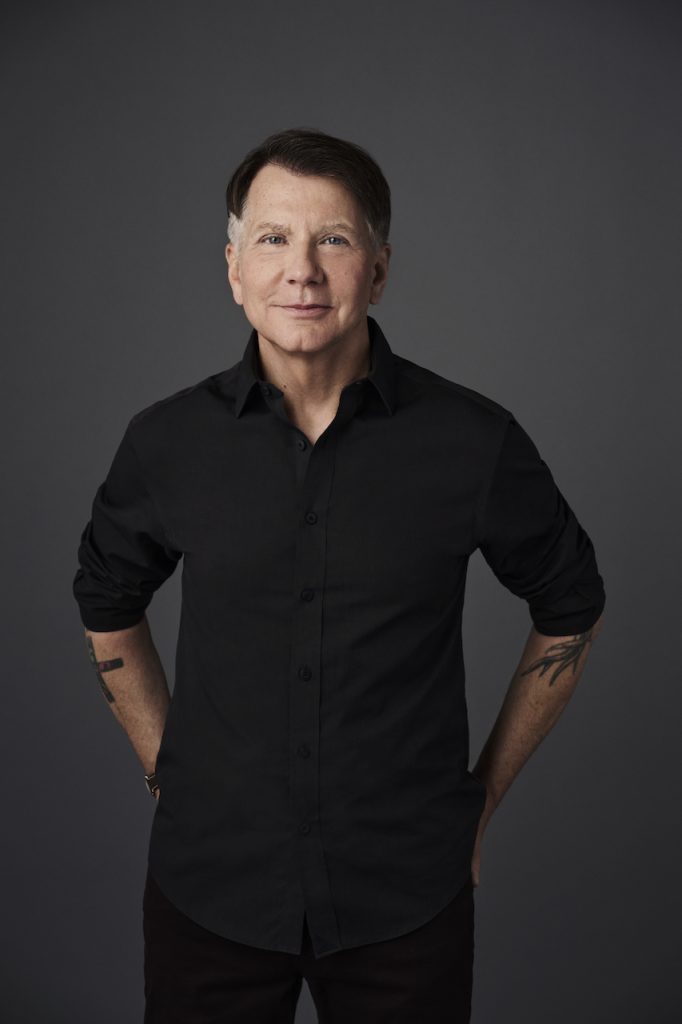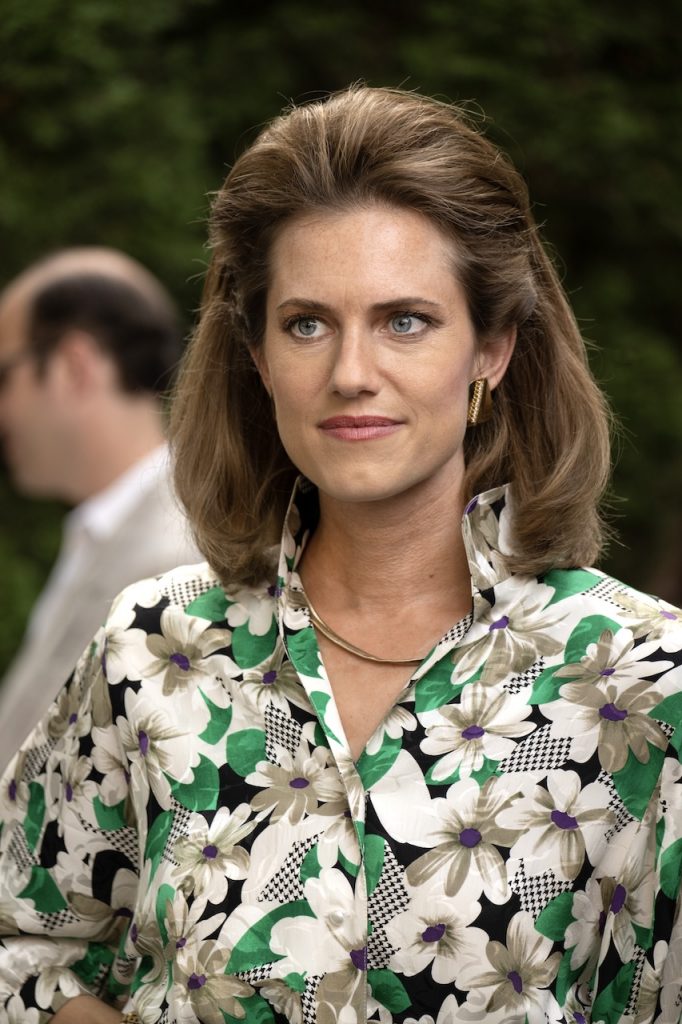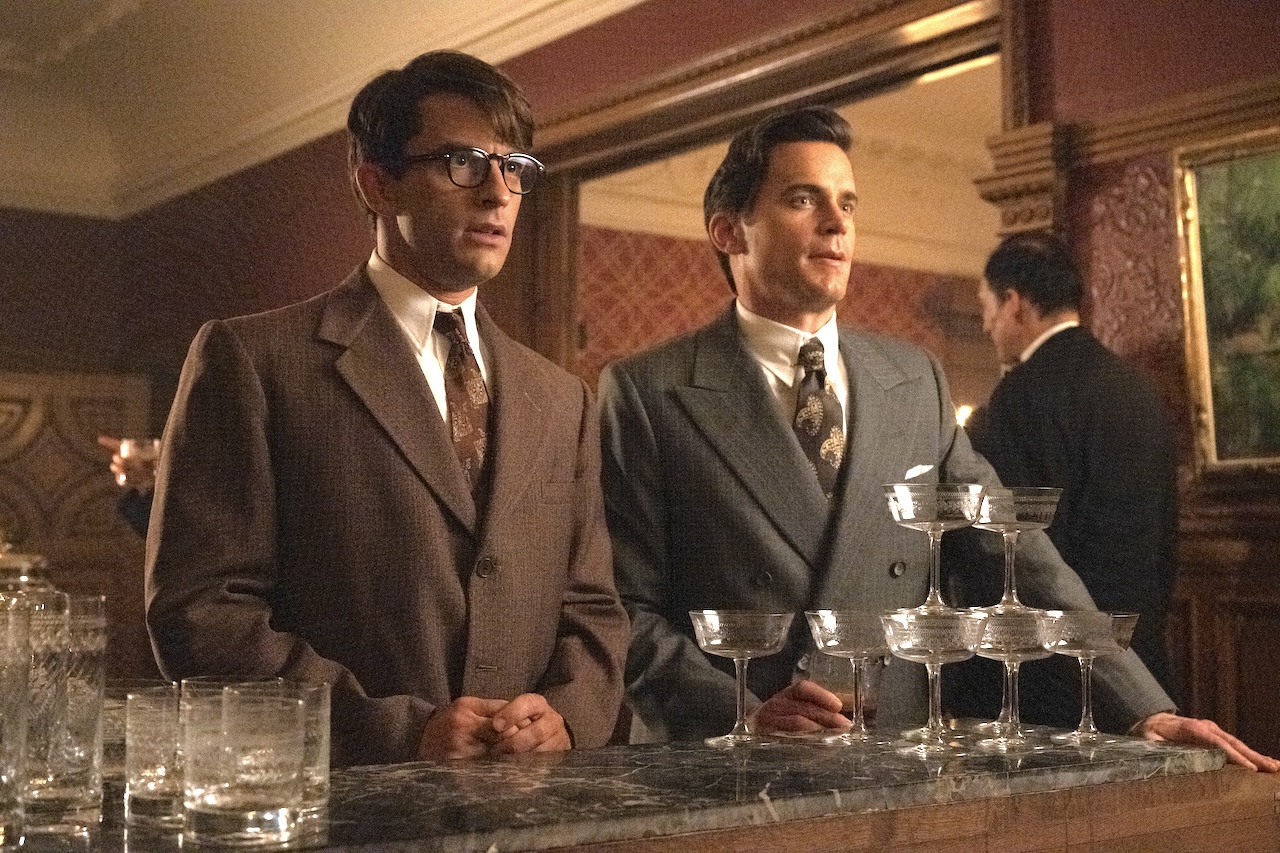Oscar and Emmy nominated screenwriter, Ron Nyswaner has forged a career in film and television with poignant stories largely chronicling the lives of LGBTQIA communities. His highlights include Philadelphia, Soldier’s Girl and My Policeman. Fellow Travelers tracks the volatile relationship between two gay men during the McCarthy era “Lavender Scare” of the 50s through to the tragic AIDS epidemic of the 80s in an eight-part limited series.
“Fellow Travelers was a phrase used in the 50s to describe people who were suspected of being sympathetic to communism secretly communist or spies,” says the writer. In the context of this television show, the title relates to two gay men “traveling together” over several decades and their three closest confidantes.
Nyswaner crafted his limited series based on the novel of the same name by Thomas Mallon, but his admiration of Mallon’s novels began earlier in a novel titled Henry And Clara. Time commitments didn’t allow them to pursue this novel at that time. When Fellow Travelers was published Nyswaner asked his management at Anonymous Content to option the rights so he could create a pitch and eventually sell it. During this journey, he met powerhouse producer Ann Biderman who offered him work on Ray Donovan, which led to Homeland. After an eleven year gestation period, he finally returned to Fellow Travelers.
Adapting The Novel
“The book gave me two really compelling characters Hawkins Fuller (Matt Bomer) and Tim Laughlin (Jonathan Bailey) that were complex and living at at a time that was dangerous to even being suspected of being a homosexual,” says the writer. Ron Nyswaner is also deeply drawn to politics. He came out in the late 70s and witnessed the devastation the AIDS epidemic caused in his community. He merged his personal experiences with the story of Fellow Travelers to create his television series.

Ron Nyswaner. Photo by Peter Yang
The novel and the series span several decades from the 50s to the 80s to witness a large, turbulent swathe of American politics and the treatment of minority groups over that time. Notably, Nyswaner chose not to tell the story of Hawkins and Tim chronologically to keep the storytelling “adventurous.”
Although technically a period piece, the writer considers Fellow Travelers to also be contemporary in its themes. “It’s the same issues, but the circumstances of the 50s, the 60s, the 70s, and the 80s are different.” He told his younger writers and cast that he didn’t hear the term “homosexual” until he went to college in the 80s to give them an idea of the American mindset at the time.
Needless to say, the Nyswager experienced considerable isolation. confusion, and fear during his high school years. “I didn’t know anybody in my life growing up, all through high school, that may have been homosexual. I didn’t know that was a thing you could be,” he recalls. “I knew that I had weird feelings, but I had no words for them. There was no community. I never read a gay character in a book. I never saw one on television or in films. That is what is profoundly different about today.” The gay community is markedly more visible in everyday society.
The decades following the World War II were tumultuous and politically-charged to say the least. There was McCarthyism, the Lavender Scare, the Vietnam protests, the sexual revolution and the AIDS scare. Although these events are specifically tied to their times, those issues have been replaced with new ones.
Meet Hawkins Fuller and Tim Laughlin
Hawkins and Tim are both working in high-profile political spheres while navigating these prominent events and being closeted gays in an unstable relationship.
“Hawkins, when we meet him, is leading in many ways with his version of a perfect life. He has everything he wants. He is good looking. He likes his job. He has great clothes. He has great taste. And he has plenty of sex. He’s the hero who is content.”
During a chance meeting in Washington DC, Tim disrupts his life. “He creates feelings in Hawkins that he doesn’t really want to have, but he can’t help having them. These are basically feelings of love which Hawkins is willing to risk at first.”
“Hawkins is apolitical and he speaks eloquently about democracy, the anti-communist cause, and the holy trinity all being fantasies. They’re just grand ideas that get people killed. His worldview was formed by living through World War II and seeing the devastation and watching eighteen year old soldiers next to him die. We are alive at this moment and we should enjoy ourselves,” he declares.
Tim is his polar opposite in many respects. “He clings to grand ideas like his religious faith, his belief in God, his belief that the world can be made better, and his belief that communism and atheism are very dangerous ideas that need to be defeated.”
“Tim’s a passionate believer in pursuing righteous things and Hawkins is a passionate believer in ignoring all those things. And that gives us a great tension to the relationship.” Hawkins is the pragmatist and Tim is the idealist.
“Hawke’s worldview is that you survive. That means you lie. That means you betray somebody. Tim’s rule is the opposite. You always have to be moral. You always have to be good, which he believes it in an almost naïve way. The audience gets to wrestle with those two worldviews.”
“Hawkins is the the hub of the character relationship wheel. All of our other characters connect to Hawkins.” The secondary characters Marcus Gaines (Jelani Alladin), Lucy Smith (Allison Williams) and Ben Sanders (Bobby Kennedy) all revolve around Hawkins over the thirty-three year time span. They all bump and grind against each other to enrich Hawkins and Tim’s lives.

Lucy Smith (Allison Williams). Photo by Ben Mark Holzberg/ Showtime
Although Fellow Travelers is ostensibly an ensemble piece, Hawkins and Tim’s relationship drives the narrative backbone. They’re in a constantly-shifting conflict with themselves, each other, and the events unfolding around them making a resolution difficult to achieve. “That’s what elevates them from being victims because the conflict within themselves is as profound, if not more so, than the conflict in the world,” elaborates the writer.
Despite their mammoth obstacles, Hawkins and Tim keep their relationship intact. But it wasn’t smooth sailing. There were large gaps and years of no contact – nine years at one point and eleven years at another. “Their time together becomes diminished as the years go by, but their bond still preserves its intensity,” explains Nyswager.
The essence of Fellow Travelers can be reduced to the shifting balance of power dynamics between the two and their environment. “I had a some rules in the writers’ room and on the set. One of the rules was that every scene is about power. That includes sex and love scenes. You could look at Hawkins and Tim’s relationship as a shifting of power.” Nyswager cites Hawkins when we first meet him in the 50s. “He owns the world. He walks in it with utter confidence.” In contrast, his confidence wanes in the 80s when he visits San Francisco and seeks solace in Tim who now holds the power.
Fellow Travelers works as the relationship between two men even if the gay elements are removed. “We discussed frequently universal human situations and drama.” Lucy Smith grieves and suffers loss as a cisgender straight woman. Her perspective is just as valid as that of the other characters.
“The non-gay characters such as Marcus yearn for somebody who doesn’t love them as much as they love them. Those are universal human experiences. They don’t belong to any particular group exclusively.”
With such a rich fountain of source material beyond the Mallon’s novel, Ron Nyswager was presented with many tough decisions about what was going to end up being included. “We don’t cover the beginning of the gay civil rights movement, which is The Lavender Scare.” However, some events were given more screen time than others.
